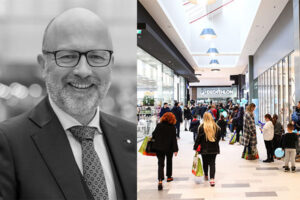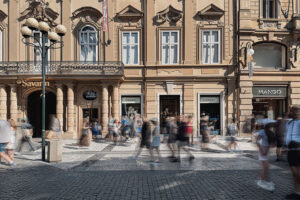by Klaus Striebich
“Happy Birthday and Congratulations, Dear Customer – The “customer” appears to have grown up and come of age. Not only are most of the players in our industry aware of and understand this fact, but they are collectively celebrating their entry into this new phase of retail life.
“Customer Centricity” is the catchphrase in the field of sales and distribution to the consumer, who is now being taken more seriously, much like a teenager coming of age, and who also bears more responsibility with respect to the process. As a teenager enters adulthood, he or she is transformed from a previously sheltered teenager into a somewhat changed, significantly more self-confident customer with an opinion of his or her own, which he or she demands and, above all, expresses loudly.
Definitive Competitive Edge
This, however, is by no means a trend. In the future, such knowledge will provide a major competitive advantage when it comes to selling products and services in an extremely complex, transparent, global, networked, and communicative world.
The basis of customer expectation has already become “24/7 – any …”, which essentially means that customers can have their wants and needs for anything fulfilled anytime and anywhere. Not only does competition exist between locations and different sales channels, but it is also present among product alternatives and additional substitution options. For example, a customer might think to himself or herself: “If I do not feel like going to the theater or watching a movie at the cinema today, I will just drink a bottle of champagne or do some crafting in my workroom at home.” How customers spend their money or their time is to be similarly classified in terms of value and incorporated into the providers’ considerations and offers.
Active Partnership with the Customer
Individualization, a trend that could also be described as “egoism” and has been a widespread phenomenon, is complemented by the desire to further refine, that is, to personalize, products that are being purchased. One such example can be found in the monogram on the cuff of a shirt. Not only does it make the purchase and the purchasing process unique, but it also creates an added value that can only be created in cooperation with the retailer.
The slogan “Together, We Are Strong” is applicable in many areas of life. It is all the more important in retail, where partnership is properly understood and embodied, and new values are created through “collaborative creation”.
Offering Sensible and Safe Consumption
The new maturity of the customer is accompanied by a more conscious lifestyle. More mindful consumption is expressed in the form of ”queries”. Customers want to know and be assured that the products and services they purchase do not negatively impact or harm the environment or their surroundings. Quite the contrary: They want to create a healthy, positive effect. What results is a kind of sensible consumption that, on the one hand, is generally questioned, but on the other hand, demands repeated use, offers repair possibilities and, finally, guarantees an intake for recycling.
The “circular economy”, with all its facets of “sustainability”, permeates the entire value creation process, driven by the new awareness of the “responsible customer”. This creates a certainty (or hope) that future generations will also be able to live and consume in a good and enjoyable way.
“Security” is another important component in terms of changing customer behavior. When purchasing products, people are not solely concerned about sustainability issues. Customers also want to be assured that the products are readily available. Delivery to the right place, as seen from the customer’s point of view, in the quantity demanded, at the appropriate price is expected. The challenges lie in managing all of the complex supply chains, which are subject to international, political, and health-related constraints. Unfortunately, there are more than enough examples of this reality at present.
Adaptation Ensures Success
The key to success for retailers and, consequently, providers of necessary retail real estate is recognizing and understanding the vast amount of ever-changing trends and making the appropriate adjustments as quickly as possible. A customer can be gone just as swiftly as a child who reaches the age of adulthood and decides to leave the family home. Relationships that have been established over a number of years and have always been nurtured will prove helpful when it comes to continuing them in the future. Therefore, the “time factor” is important in two respects: The speed at which knowledge is gained and implemented, as well as the long-term nature that makes sustainable success possible in the first place.
What help and support is available to cope with all the requirements associated with successful business management?
The creativity and innovative power of people have always been the foundations of new phases in our lives. In economic terms, such innovation manifested itself in the invention of the steam engine, for example, which enabled the mass production of goods, thereby making them available to everyone. When it came to cars, trains, and airplanes, unprecedented mobility of people was created, which redefined the importance of location.
Nowadays, with “digitalization” and its associated technical and communication capabilities, we have once again entered a new era that offers seemingly endless possibilities. The speed and intensity of the communication possibilities available in both private and business life facilitate virtually infinite solution variants or alternatives that can meet the demands of customers. The synergies gained from technical deployment make profitability possible in the first place, and with that, in turn, the opportunity for further innovations and creative offerings.
Without the data center of a company, the processing of data in a cloud, or a smart device in the hands of a customer, it is almost impossible to conceive of or to organize retail activities.
Redefining Locations
Crucial questions in this context include: What role does “location” still play in this regard? Are locations necessary for sales in such a digital world? One thing has become abundantly clear: The roles and functions of locations need to be redefined. For value creation in retail operations, locations are required for offer and product development, logistics, organization, production, contact with customers, and sales.
Locations that offer contact opportunities with customers will be forced to change and reinvent themselves again and again. Shorter life cycles are to be expected in terms of size, location, and duration, which involves an increased investment risk, including all the resulting consequences.
The Human Factor
On the other hand, customers also want to be around other people. They enjoy talking to people and meeting them. Receiving direct assistance and support in choosing new products – touching them, trying them out, testing them, and experiencing them – remain essential factors for retail success. At the end of the day, despite all the technical and digital innovations, we are still human beings – and that is a good thing.
All in all, there are numerous tasks to fulfill and challenges to meet in order to satisfy the wishes and needs of customers – and by extension, all of us. However, in my opinion, there are also at least as many opportunities and possibilities to successfully shape the future.
We, the customers, hold the key.
About the author:
Klaus Striebich is Managing Director of RaRe Advise and Head of the ACROSS Advisory Board






